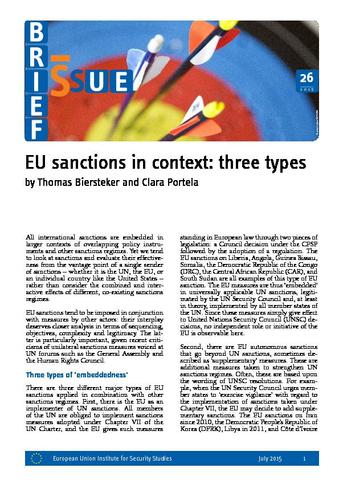You are here
EU sanctions in context: three types

All international sanctions are embedded in larger contexts of overlapping policy instruments and other sanctions regimes. Yet we tend to look at sanctions and evaluate their effectiveness from the vantage point of a single sender of sanctions – whether it is the UN, the EU, or an individual country like the United States – rather than consider the combined and interactive effects of different, co-existing sanctions regimes. EU sanctions tend to be imposed in conjunction with measures by other actors: their interplay deserves closer analysis in terms of sequencing, objectives, complexity and legitimacy. The latter is particularly important, given recent criticisms of unilateral sanctions measures voiced at UN forums such as the General Assembly and the Human Rights Council.